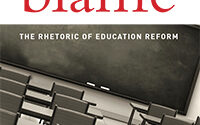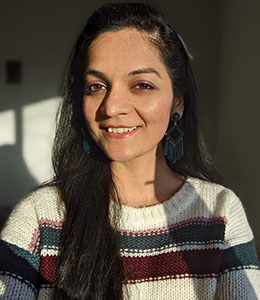Healthcare Communication as a Social Justice Issue: Strategies for Technical Communicators to Intervene
Health Literacy of International Students in the US
During my early days in the United States as a new Asian graduate student, I faced some health challenges that continued in the next five years because I could not successfully navigate the complex US healthcare system by myself. This led to delays in receiving care and aggravated my health conditions. Only if I had received care sooner, I’d have known that I had minor allergies that could be treated easily; however, frustration from not being able to access care immediately led to a vicious cycle of stress inviting more health problems. This makes me wonder, isn’t the whole point of having easy access to healthcare to enable human beings to live a better life, irrespective of their race, religion, gender, nationality, class, or economic status? Isn’t healthcare a basic human right provided even to the minority ethnic populations, like myself, so that we can live a life of dignity and good health? I learned that, despite the US being one of the most advanced countries in the world, disparities in access to healthcare existed among several minorities in the US, including African Americans, American Indians and Alaska Natives, Asians, Pacific Islanders, and Hispanics (Egede; Nelson et al.; Paasche-Orlow and Wolf; Cashen). These racial disparities have existed for reasons of low income, lesser or lack of insurance coverage, limited English proficiency, low health literacy,1 cultural differences in contexts of care, etc. (Paasche-Orlow and Wolf).
Recent research into minorities’ access to care has increasingly become a topic of interest in technical communication (Gonzales et al.; Rose et al.). However, there are still some diverse groups of populations—not necessarily minorities—such as international people, particularly international students, in the US that have yet to be thoroughly studied (Carmack et al.). There are compelling reasons to research an international population because such populations may have difficulty understanding complex health-related information, particularly if they are non-native English speakers or multilingual speakers, and this can lead to them having poor health outcomes (Adegboyega). In the US, access to healthcare mostly begins by first enrolling in health insurance. Insurance is the key to unlocking access to healthcare, and insurance is assumed to solve most problems. In the case of international population, for example, the access to healthcare through insurance is complicated because of unfamiliarity with the US healthcare system, as not all countries around the world mandate a person to have insurance to seek medical care. This unfamiliarity can cause international students to utilize health services less efficiently than domestic students because that requires them to navigate through insurance, medical history forms, understanding care costs, etc., which are often completely novel processes to them.
The first time that international students receive information on healthcare/health plans is often during new student orientations held at universities (Carmack et al.; Adegboyega). The orientations usually provide a quick overview of the healthcare system and health insurance plans by educating international students about why one purchases insurance, how to choose an insurance, what to do with an insurance card, why and how to use health plan portals, etc. From my personal experience of being an international student, these orientations are typically thirty-minute long, which is not sufficient time to explain the complex structure of the US healthcare system to international students, and this could potentially contribute to the poor health literacy of this population. Further, this diverse population has been exposed to the healthcare systems of their home countries for a very long time, which makes processing new information (such as the US healthcare system) difficult for them because healthcare systems differ all over the world. Factors such as when care is administered, where care is administered, who provides care, what constitutes care, and what is used to administer care differ from culture to culture (St. Amant and Angeli). As a result, when international students first hear about the US healthcare system, they may find it unfamiliar and even confusing or complicated, causing them to leave the healthcare orientation with much less knowledge than they need. This leads to poor health literacy of international students, as a communication gap is created between healthcare communicators and international students (Adegboyega). Thus, the question then is how can this communication gap be reduced? Technical communicators are adept at producing and designing information that can be understood by specific, targeted audiences (Melonçon, “Patient Experience Design: Technical”), and I so believe that we are uniquely positioned to reduce such gaps and improve healthcare communication to help international audiences to seamlessly exercise their right to healthcare in the US.
Technical Communication’s Role in Improving Healthcare Communication
Technical communicators regularly assist people who need to acquire some kind of information and then act on it, and several technical and professional communication scholars have specifically assisted with improving patient education materials (PEMs) (Rose; Willerton; St.Amant, “Aspects of access”; Gonzales et al.). As technical writers and rhetoricians of health and medicine, we often work on writing and designing PEMs, such as patient discharge instructions, informational material to help patients and their families make informed decisions, take home instructions, pharmaceutical pamphlets explaining drug use, etc. A healthcare orientation program certainly falls under PEMs, where instructions about accessing healthcare are delivered to audiences in the form of a training session. And while PEM uses the word “patient,” PEMs can also be for “not yet patients” (Melonçon, “Patient experience design: expanding”), such as international students in this case who are simply trying to understand insurance-related information. Thus, I propose that technical communicators aid healthcare communicators at US universities to find better ways of transferring health information to international students so that their health literacy can be improved and they can feel empowered to make well-informed healthcare decisions.
Struggles of International Students with the US Healthcare System
Healthcare orientations take place during the time when most international students are new to the university and often new to the country and its culture. During this time, international students have to deal with several matters, such as financial stress, a new working environment, a new educational environment, new friendships, racial discrimination, language proficiency, etc. (Andrade; Olivas and Li; Zhao et al). It is indisputable that these students need time to adjust to their new lives, and thus absorption of information of the complicated US healthcare system can be very hard for them at that time. The rhetoric of this information can be daunting and/or unclear to some students because the information could be delivered in very distinctive American accents—which can be difficult to register for students new to the country—using technical terminology like premium, co-pay, or deductible coupled with calculations in decimals and fractions.
In a study by Carmack et al. on healthcare communication issues of international students, participants mentioned that their university did not explain why international students had to pay for insurance when they did not use it (59). Many participants in this study expressed annoyance with the different rules and procedures associated with the university health center, such as being charged for not cancelling an appointment or not being told what was covered by the university student insurance (65). In Adegboyega’s study, some participants “attributed their limited or lack of knowledge to not being exposed to information on health insurance during orientations and afterwards” (57). In an older study by Cheng, students said they would avoid going to the health center because of the lack of control and choice in seeking care and bear the pain instead until they visited their home country during breaks (84) —which is something I personally also prefer doing today as an international student in the US. Cheng explains that stress from not being able to navigate the healthcare system can likely generate additional physical illness in the future, thus causing international students to become vulnerable to encountering health problems and facing difficulties in the process of receiving health services (71).
It should also be noted that international students are not allowed to stay in the US without health insurance; for example, an international student gets dropped from a program if they do not sign up for insurance, which has a direct impact on visa status and can lead to deportation. Thus, it is possible that some students feel the pressure to simply sign up for insurance without gaining much of an understanding of it, and this can lead to them paying higher premiums or having less coverage and benefits. It is also possible that some universities may give brief instructions on healthcare while other universities overload students with information. In either case, it can be observed that some international students enroll in health plans without comprehending it properly and later avoid seeking care despite having insurance and paying premiums every month (Cheng). This indicates that they lack power when choosing a health plan of their choice and when trying to seek medical care using that health plan, thus making this situation a socially unjust one as it keeps international students away from fully exercising their right to healthcare.
Proposed Solutions for Improving the Health Literacy of International Students
Conducting Research on Orientation Programs as a PEM
While previous studies have interviewed and surveyed international students on their experiences with the US healthcare system (Adegboyega; Carmack et al.; Cheng; Sheldon), research particularly on the instructional design of orientation programs as a PEM is still lacking. More than anyone, it is a technical communicator who has the expertise to study the instructional design of the orientations while keeping the international audiences’ needs in mind. Therefore, an intervention by technical communicators in healthcare communication can help in advocating for better experiences of international students at university orientations. Thus, a study is needed where international students are specifically interviewed about their experience with their orientation program. The responses collected can aid technical communicators in suggesting recommendations for the instructional content of orientation programs.
Using A Participatory Design Approach to Improve Orientation Programs
A social justice approach that attends to ideas and actions concerning fairness, equality, barriers and access, and individual and collective rights (Jones; Charmaz) would benefit technical communicators in addressing the feeling of a lack of power and control that international students can face during orientation. Such an approach can help identify what the rhetorical situation for the orientation programs is: are orientations conducted because it is a prerequisite that students be on a health plan to be enrolled in school or because it will benefit them when they need to access care in future? Integration of a social justice approach to the study of orientations as a PEM can be made possible through a participatory design method that would involve the collaboration of international students, technical communicators, and university healthcare communicators in the instructional design of healthcare orientations. Such a participatory approach would give the primary stakeholders, international students, a voice for pointing out the areas of frustration and highlight where they feel pressured, overwhelmed, and lost during the orientation, thus allowing technical and healthcare communicators to identify how to give the orientation a more human touch when delivering instructions at orientations. St. Amant refers to this participatory approach framework involving international stakeholders in the design process from the beginning of the development of health and medical instructional content as international patient experience design (I-PXD) (“Mapping the cultural context”; “The cultural context of care”).
I-PXD uses prototype theory (St.Amant, “Mapping the cultural context”) as its basis for mapping the contexts in which users use PEMs to develop PEMs that meet the expectations of users in a range of international settings/contexts. “The cultures in which we are raised expose us to different prototypes for genres over time,” such as prototypes of education systems, government systems, healthcare systems, etc. (qtd. in St.Amant, “Ethos prototypes” 467). Prototypes assist in determining how “acceptable” or “credible” an item is within a prototype class (St.Amant, “Culture and the contextualization”). Because most international students have been exposed to the healthcare system of their home countries for a very long time and they have a prototype of the “journey of care”2 in their minds, processing new information about complicated US healthcare during orientations can lead to cognitive overload. St.Amant (“Culture and the contextualization”) argues that if information is presented in a context that users recognize as familiar, then individuals are more likely to view that content as credible or worth paying attention to. Prototype theory thus helps in identifying what makes the content more credible or acceptable to users. An I-PXD approach that empowers collaboration of internationals students, technical communicators, and healthcare communicators can help in understanding the various prototypical journeys of care that need to be considered when designing the instructional material for orientations. The I-PXD approach will help determine how the healthcare information must be contextualized to address the prototypical expectations of international students during orientation.
Using Plain Language to Modify the Instructional Content of Orientation Programs
Willerton’s BUROC model outlines the Bureaucratic, Unfamiliar, Rights Oriented, and Critical situations that would benefit from the use of plain language. BUROC situations are the ones that present challenges to people, causing them to feel stress or anxiety as they may have to use a language other than their native tongues when acquiring information and acting on it. The communication gap between university healthcare communicators and international students fits the BUROC model, as we see that international students may have difficulty understanding complex health-related information, especially if they are non-native English speakers or multilingual speakers, and also face difficulty asking technical questions related to healthcare. One way of minimizing this struggle for international students could be by providing healthcare information in multiple languages for linguistic justice purposes. St. Germaine-McNaniel and St. Amant argue that “language accessibility or the availability of usable information in languages other than English, is an issue of growing importance in high-stakes environments like healthcare” (qtd. in Gonzales et al., 194). However, providing technical healthcare information in multiple languages may not be always feasible when students come from several distinct cultures. In such cases, the use of plain language can aid in reducing the rhetorical pomposity of the technical healthcare information and redress the matter of linguistic injustice. Cheung suggests that if communicators used plain language, it may help reduce the cognitive load for audiences and enable them to process information with more ease; thus, plain language can be a key strategy for technical communicators. Cheung urges technical communicators to see plain language as an ethical imperative to advance social justice, particularly for marginalized populations who have more worries that collectively tax their working memory in a way that can impair their learning (449). Drawing a parallel here to international students indicates that this population goes through acculturative stress that can hurt their working memory and impact their learning during orientation sessions, affecting their health literacy in the long run. Thus, for a BUROC situation like that of international students, technical communicators can consider designing instructional content for orientations using plain language.
Conclusion
International populations are a valuable asset to the US, not only by adding significantly to the local economy through direct expenditures but also by enriching the culture and experiences of local residents and serving as tremendous foreign policy assets (Owens et al.). According to former U.S. Secretary of State Colin Powell, “[I]nternationals help American citizens develop understanding and knowledge that enriches lives and increases international cooperation” (qtd. in Owens et al. 162). For these benefits to continue for the country, suitable support should be provided for international populations who make tough compromises when living in a different country. One way of providing support to international populations is to provide them with better and more efficient guidance in understanding healthcare because, as mentioned previously, it is a basic human right. And one can live a better life if one’s health is in good shape.
Endnotes
- Health literacy is the ‘‘degree to which individuals have the capacity to obtain, process and understand basic health information and services needed to make appropriate health decisions’’ (qtd. in Paasche-Orlow and Wolf, 34). return
- The process by which individuals move to and through spaces when accessing and receiving care” (qtd. in St.Amant, “Culture and casual chains,” 126). return
Works Cited
Adegboyega, Adebola, et al. “Health Insurance Literacy Among International College Students.” Journal of International Students, vol. 10, no. 1, 2020, pp. 50-68.
Andrade, Maureen S. “International Students in English-Speaking Universities: Adjustment Factors.” Journal of Research in International Education, vol. 5, no. 2, 2006, pp. 131-54.
Carmack, Heather J., et al. “International Students, University Health Centers, and Memorable Messages About Health.” Journal of International Students, vol. 6, no. 1, 2016, pp. 52-72.
Cashen, Margaret S., et al. “eHealth Technology and Internet Resources: Barriers for Vulnerable Populations.” Journal of Cardiovascular Nursing, vol.19, no. 3, 2004, pp. 209-14.
Charmaz, Kathy. “Grounded Theory in the 21st Century: Applications for Advancing Social Justice Studies.” In N. K. Denzin & Y. S. Lincoln (Eds.), The Sage Handbook of Qualitative Research, edited by Norman K. Denzin and Yvonna.S. Lincoln, Sage Publications, 2005, pp. 507–36.
Cheng, Hsin-I. “Being Ill in A Foreign Land: International Students’ Perceptions of and Experiences with University Health Services.” Kaleidoscope: A Graduate Journal of Qualitative Communication Research, vol. 3, 2004, pp. 70-92.
Cheung, Iva W. “Plain Language to Minimize Cognitive Load: A Social Justice Perspective.” IEEE Transactions on Professional Communication, vol. 60, no. 4, 2017, pp. 448-57.
Egede, Leonard E. “Race, Ethnicity, Culture, and Disparities in Health Care.” Journal of General Internal Medicine, vol. 21, no .6, 2006, pp. 667-69. DOI: 10.1111/j.1525-1497.2006.0512.x
Gonzales, Laura., et al. “A Dialogue with Medical Interpreters about Rhetoric, Culture, and Language.” Rhetoric of Health & Medicine, vol. 1, no. 1, 2018, pp. 193-212.
Jones, Natasha N. “The Technical Communicator as Advocate: Integrating a Social Justice Approach in Technical Communication.” Journal of Technical Writing and Communication, vol. 46, no. 3, 2016, pp. 342-61.
Melonçon, Lisa K. “Patient Experience Design: Expanding Usability Methodologies for Healthcare.” Communication Design Quarterly Review, vol. 5, no. 2, 2017, pp. 19-28.
Melonçon, Lisa K. “Patient Experience Design: Technical Communication’s Role in Patient Health Information and Education.” Intercom, 2016, https://www.stc.org/intercom/2016/02/patient-experience-design-technical-communications-role-in-patient-health-information-and-education/
Nelson, Alan, et al. Unequal treatment: Confronting Racial and Ethnic Disparities in Healthcare. Washington DC: National Academies Press, 2002.
Olivas, Monique, and Chi-Sing Li. “Understanding Stressors of International Students in Higher Education: What College Counselors and Personnel Need to Know.” Journal of Instructional Psychology, 2006, vol. 33, no. 3, pp. 217-22.
Owens, Deborah L., et al. “Viewing International Students as State Stimulus Potential: Current Perceptions and Future Possibilities.” Journal of Marketing for Higher Education, vol. 21, no. 2, 2011, pp. 157-79.
Paasche-Orlow, Michael K., and Michael S. Wolf. “Promoting Health Literacy Research to Reduce Health Disparities.” Journal of Health Communication, vol. 15, no. S2, 2010, pp. 34-41.
Rose, Emma J., et al. “Community-Based User Experience: Evaluating the Usability of Health Insurance Information with Immigrant Patients.” IEEE Transactions on Professional Communication, vol. 60, no. 2, 2017, pp. 214-31.
Sheldon, Pavica. “Being Ill in a Foreign Country: International Students’ Trust in American Physicians.” Journal of Intercultural Communication, vol. 19, 2009.
St. Amant, Kirk. “Aspects of Access: Considerations for Creating Health and Medical Content for International Audiences.” Communication Design Quarterly Review, vol. 3, no. 3, 2015, pp. 7-11.
St. Amant, Kirk. “Culture and the Contextualization of Care: A Prototype-Based Approach to Developing Health and Medical Visuals for International Audiences.” Communication Design Quarterly Review, vol. 3, no. 2, 2015, pp. 38-47.
St. Amant, Kirk. “Ethos Prototypes: The Intersection of Rhetoric, Cognition, and Communicating Health Policy Internationally.” World Medical & Health Policy vol. 11, no. 4, 2019, pp. 464-73.
St. Amant, Kirk. “Mapping the Cultural Context of Care An Approach to Patient-Centered Design in International Contexts.” Connexions, vol. 2, no. 1, 2017, pp. 109-24
St. Amant, Kirk. “The Cultural Context of Care in International Communication Design: A Heuristic for Addressing Usability in International Health and Medical Communication.” Communication Design Quarterly Review, vol. 5, no. 2, 2017, pp. 62-70.
St. Amant, Kirk, and Elizabeth L. Angeli. “Contextualizing Care in Cultures: Perspectives on Cross-Cultural and International Health and Medical Communication.” Present Tense, vol. 7, no. 3, 2019.
Willerton, Russell. Plain language and Ethical Action: A Dialogic Approach to Technical Content in the 21st century. Routledge, 2015.
Zhao, Chun-Mei, et al. “A Comparison of International Student and American Student Engagement in Effective Educational Practices.” The Journal of Higher Education, vol. 76, no. 2, 2005, pp. 209-31.
COVER IMAGE CREDIT: Wikimedia Commons, the free media repository
KEYWORDS: international student, US healthcare, technical communication, patient education, plain language.




 Akshata Balghare is a PhD candidate at Texas Tech University in the technical communication and rhetoric program. She has a masters in technical and professional communication from Auburn University and a bachelors in electronics engineering from University of Pune, India. Akshata has professional experience working as a technical editor for engineering and scientific documents. At Texas Tech, she teaches first-year writing and technical writing courses. Her research interests include healthcare communication and user experience design. Her PhD dissertation investigates the cultural and technical challenges that international students face when navigating US healthcare.
Akshata Balghare is a PhD candidate at Texas Tech University in the technical communication and rhetoric program. She has a masters in technical and professional communication from Auburn University and a bachelors in electronics engineering from University of Pune, India. Akshata has professional experience working as a technical editor for engineering and scientific documents. At Texas Tech, she teaches first-year writing and technical writing courses. Her research interests include healthcare communication and user experience design. Her PhD dissertation investigates the cultural and technical challenges that international students face when navigating US healthcare.